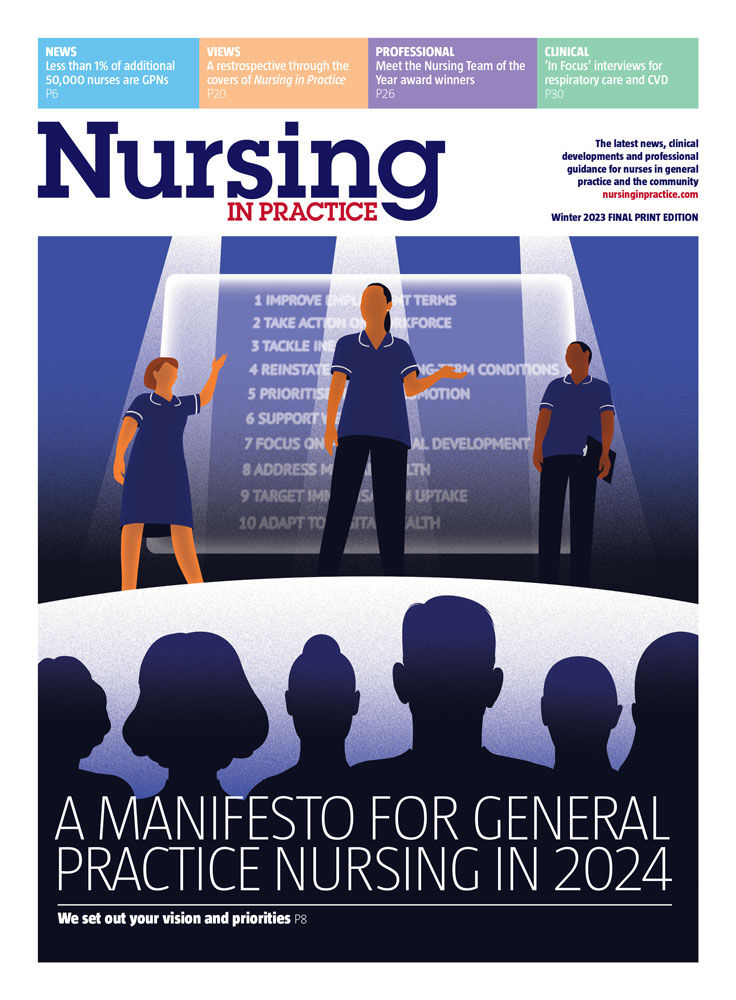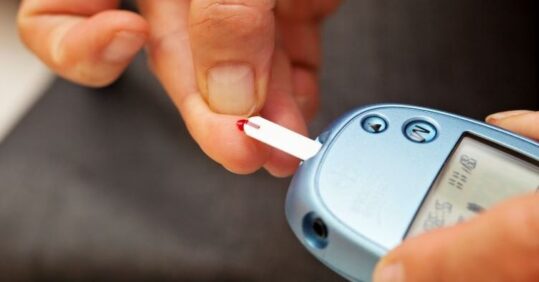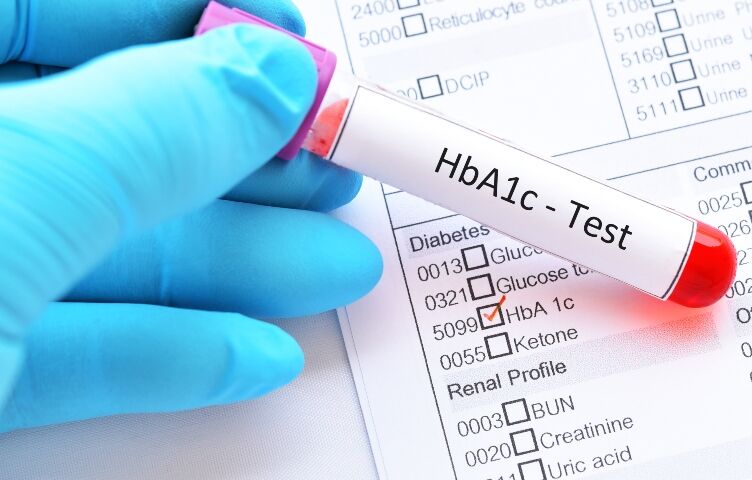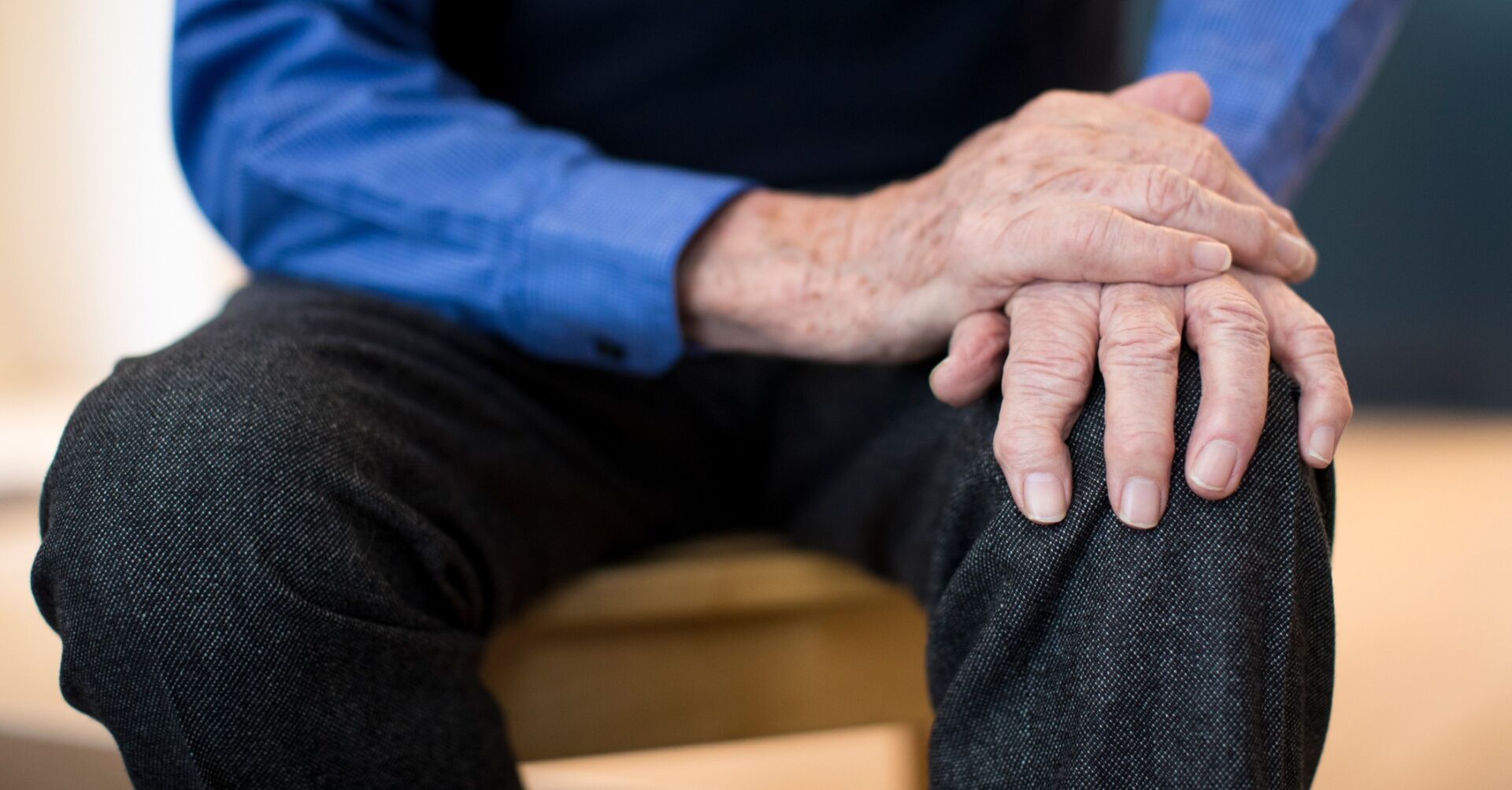GP and diabetes specialist Dr Waqas Tahir explains how primary care teams can support people living with diabetes to manage their condition safely when fasting
Ramadan is the ninth month in the Islamic lunar calendar, when healthy Muslims will fast during the day (not eating or drinking from dawn until dusk). Most people take two meals in the day – Suhoor (meal before dawn) and Iftar (meal after sunset).
An estimated 320,000 UK Muslims are living with diabetes and it is important for those who choose to fast during Ramadan to receive tailored support and advice to make appropriate lifestyle and medication changes to be able to fast safely.
Here GP and diabetes lead in Bradford Dr Waqas Tahir outlines some key points for nurses and primary care teams on how they can best support patients to manage their diabetes when fasting.
What are the potential risks of fasting for people with diabetes?
For those living with diabetes the three main risks associated with fasting are: hypoglycaemia, hyperglycaemia and dehydration.
Hypoglycaemia
We know that fasting is associated with an increased risk of severe hypoglycaemia in both type 1 and type 2 diabetes. This may be somewhat surprising – we usually associate severe hypoglycaemia with type 1 diabetes, where there is no pancreatic insulin reserve – but recent studies have highlighted that people with type 2 diabetes are also at significant risk when fasting. For example, the global EPIDIAR study found that among people with diabetes who chose to fast during Ramadan the rate of hypoglycaemic episodes increased 4.7-fold in those with type 1 diabetes and 7.5-fold in those with type 2 diabetes.1
Hyperglycaemia
The risk of hyperglycaemia can be raised after Iftar, the meal when people break their fast after sunset. This can be particularly heightened by certain fried or fatty foods that are traditionally eaten.
The EPIDIAR study showed that rates of hyperglycaemia in people with diabetes increased around five-fold during Ramadan compared with before.
Dehydration
Particularly in summer when it is warmer and the days are longer, the fasting period can pose a risk for dehydration, especially for those on certain medications. This in turn increases the risk of thrombosis.
How can primary care teams support patients preparing for Ramadan?
One of the key considerations is supporting people in their personal choice and recognising their individual priorities.
In GP practices like mine with a large Muslim population we have a system to invite patients for a diabetes review, around 6-8 weeks prior to the start of Ramadan, to help them prepare for fasting if they wish to. This is really important as often patients assume they will be told they can’t fast and therefore avoid asking about it, potentially putting themselves at risk – when in reality around 70-80% of people with diabetes can fast provided they have the right preparation and support.
Not everyone is able to fast however. Those who are committed to observing Ramadan and wanting to fast can be given reassurance from a religious perspective there are exemptions. For example the Surah Al-Baqarah, verse 195 in the Quran, says you should not act in a way that does harm to your body. And there are alternatives to fasting such as giving to charity – Fidyah – and helping prepare food for people who are fasting in the community. Patients can be signposted to their local Imam and resources including from Diabetes UK.
People are usually advised not to fast if they:
- are children (under the age of puberty)
- are elderly
- have learning difficulties
- are planning to travel
- are pregnant, breastfeeding or menstruating
- are frail or unwell.
Practices should risk stratify other patients to help come to a shared decision on whether it is suitable for them to fast. The International Diabetes Federation (IDF) and Diabetes and Ramadan International Alliance (DAR) guidelines advocate use of a traffic light risk score and many local pathways incorporate these into their review protocol (see box 1 below).2
Discussions should take into account factors such as:
- Type of diabetes and individual history of hypoglycaemic episodes or hospitalisations.
- Medications, in particular drugs that are associated with hypoglycaemia.
- Presence of complications such as neuropathy, renal or cardiovascular disease.
- Occupation – in particular whether labour intensive or physically demanding manual work.
- Patient’s ‘hypo awareness’ – how well they understand their condition and hypoglycaemia risks.
- History of fasting during Ramadan in previous years – usually a good indicator of how they can manage.
Box 1: Risk stratification for fasting advice3
Low or moderate risk
Type 1 diabetes well controlled with diet, tablets (monotherapy), on glucagon-like peptide-1 (GLP-1) receptor agonists or basal insulin. No complications.
High risk (should not fast)
Poorly controlled type 2 diabetes; well-controlled type 1 diabetes; well-controlled type 2 diabetes on multiple daily injections or mixed insulin; pregnant with type 2 diabetes or gestational diabetes managed with diet and/or metformin; CKD stage 3; those with stable macrovascular complications.
Very high risk (must not fast)
Poorly controlled type 1 diabetes; chronic dialysis or CKD stage4/5; severe hypoglycaemia / diabetic ketoacidosis or hyperosmolar hyperglycaemic coma within last three months; recurrent hypoglycaemia; hypoglycaemia unawareness; acute illness; pregnancy in pre-existing diabetes or gestational diabetes treated with insulin or sulphonylureas, advanced macrovascular complications; old age and frailty.
People considered to be at high risk are advised not to fast. However, some may still choose to. This important personal decision should be made after consideration of the associated risks in consultation with their diabetes clinical team. These people also need to be aware of the techniques or strategies to decrease the risks. If individuals choose to fast, they need to be cautious and discontinue fasting if any problems arise.
What lifestyle changes should patients be advised on?
For people who plan to fast, some of key practical lifestyle tips are:
- Stay hydrated by drinking plenty of water during non-fasting hours and avoiding dehydrating beverages like tea and coffee and caffeinated energy drinks.
- Gradually reduce caffeine intake before Ramadan to minimise withdrawal symptoms such as headaches.
- Take short breaks throughout the day instead of a lunch break.
- Maintain a balanced diet to support overall health and well-being.
- Incorporate light physical activity, such as walking, into your daily routine.
Physical activity
The usual advice for patients with diabetes is to engage in some physical activity every day – to help reduce blood pressure and maintain a healthy weight. However, during Ramadan their level of fitness and the increase in activity in particular with regular prayers should be taken into account. For example, the Taraweeh prayer each evening involves repeated cycles of rising, kneeling and bowing.
The risk of both hypoglycaemia and dehydration is particularly high towards the end of the fasting period, so it is important for people to take extra care during these hours, for example by taking only light exercise or taking extra screen breaks during that time.
Nutritional advice
It is important to give patients culturally sensitive and appropriate advice around substituting some healthier options for fatty or sugary foods traditionally eaten during Ramadan.
For example, the pre-dawn Suhoor meal may include foods such as paratha, sugary cereal and yoghurts – so advice may include advising plain or wholemeal chapatti instead of paratha and a high-fibre unsweetened cereal or porridge with low fat milk.
Similarly we would recommend at Iftar 1-3 dates and healthier options such as semi-skimmed or skimmed milk instead of lassi, and roast instead of fried chicken or fish.
The IDF-DAR guidelines include a nutrition plan, with a breakdown of what a healthy Ramadan plate can include.
What medication changes may be required?
The IDF-DAR guidelines provide clear advice on medications and most local pathways are based on this. Some key points are outlined in box 2 below.
Most antidiabetic drugs used for type 2 diabetes such as metformin, GLP-1 receptor agonists, dipeptidyl peptidase (DPP)-4 inhibitors and sodium glucose co-transporter-2 (SGLT-2) inhibitors have a low risk of hypoglycaemia and do not require doses to be changed with fasting. Medications that are usually taken three times daily simply require doses to be redistributed for twice daily dosing with meals.
Sulphonylureas and insulin are associated with a higher risk of hypoglycaemia and require dose adjustments. For example, a sulphonylurea will usually be switched to a higher dose with the larger evening meal, with a reduction in the morning dose.
Dose adjustments to insulin will be guided closely by self-monitoring of blood glucose (SMBG; see next section).
Any dose adjustments or modifications should be started at the diabetes review 6-8 weeks before Ramadan and tailored to the individual, followed by another review. The plan, along with an aide memoire, is messaged to the patient and put on their record so they can access it through the NHS App, in line with good clinical practice.
Box 2: Examples of medication dose adjustments/modifications
Metformin
Once-daily or twice daily dosing with meals – no modification
Three times daily dosing – combine two doses with larger meal (eg, 500mg morning + 1g evening)
GLP-1 receptor agonists (eg, exenatide, liraglutide)
Once daily dosing – no modification required
DPP-4 inhibitors (eg, alogliptin, sitagliptin)
Once daily dosing – no modification required
SLGT-2 inhibitors (eg, dapagliflozin, empagliflozin)
Provided initiated at least 4 weeks prior – no modification required
Ensure adequate hydration
Sulphonylureas (eg, glicazide, glimepiride)
Once daily – reduced dose (if well controlled).
Twice daily – reduced dose with morning meal.
What advice is given about self-monitoring?
Patients are advised to test their blood glucose levels more regularly when fasting to help prevent hypoglycaemia or hyperglycaemia. They can be reassured blood testing does not break the fast.
For example, patients with type 2 diabetes on sulphonyureas and/or insulin who using finger prick blood tests for SMBG will usually need to increase the frequency of monitoring from once to two or three times a day – usually done before fasting, around midday and then at sunset before the Iftar meal.
Patients with occupations involving operating machinery or driving may need to do even more frequent testing.
Newer technology for SMBG has made this more manageable and many patients with Type 1 diabetes are now using continuous glucose monitoring (CGM) devices, which send automated blood glucose readings to a device such as a smartphone. These patients often have good insight into their condition, responding to alarms, being flexible around rest periods and understanding the effects of exercise on their blood sugar.
Patients with type 2 diabetes are also now eligible for a CGM – if they are on multiple (two or more) daily insulin injections and have recurrent or severe hypoglycaemia, impaired hypoglycaemia awareness, or a disability meaning they are unable to self-manage. These patients may be less confident in their self-management and will require additional tailored support if they choose to fast.
For patients who are potentially at a higher risk but wish to fast we will sometimes carry out a trial of a half-day, then a full-day fast ahead of Ramadan to see how they manage with SMBG and medication dose adjustments.
What if a person experiences hypoglycaemia when fasting?
People are advised they must break their fast early if they are having a hypoglycaemic episode. One study reported around a third of people failed to break fast during documented episodes of hypoglycaemia.4
At any signs or symptoms of hypoglycaemia, eg, palpitations, sweating, altered mental status or a SMBG below 70mg/dL / 3.9mmol/L they should break the fast. They can be reassured that breaking the fast for this reason does not mean they are not fulfilling their religious commitment.
Dr Waqas Tahir is a GP in Bradford and clinical diabetes lead for the West Yorkshire Health and Care Partnership
References
- Salti I, Benard E, Detournay B et al. A population based study of diabetes and its characteristics during the fasting month of Ramadan in 13 countries: results of the epidemiology of diabetes and Ramadan (EPIDIAR) study. Diabetes Care 2004; 27(10): 2306-11
- IDF-DAR. Diabetes and Ramadan: Practical Guidelines 2021.
- Tahir W. West Yorkshire and Harrogate Health and Care Partnership. Advice for people with diabetes during Ramadan. 2021
- Beshyah S, Hassanein M, Ahmedani M et al. Diabetic hypoglycaemia during Ramadan fasting: A trans-national observational real-world study. Diabetes Res Clin Pract 2019; 150: 315-21







